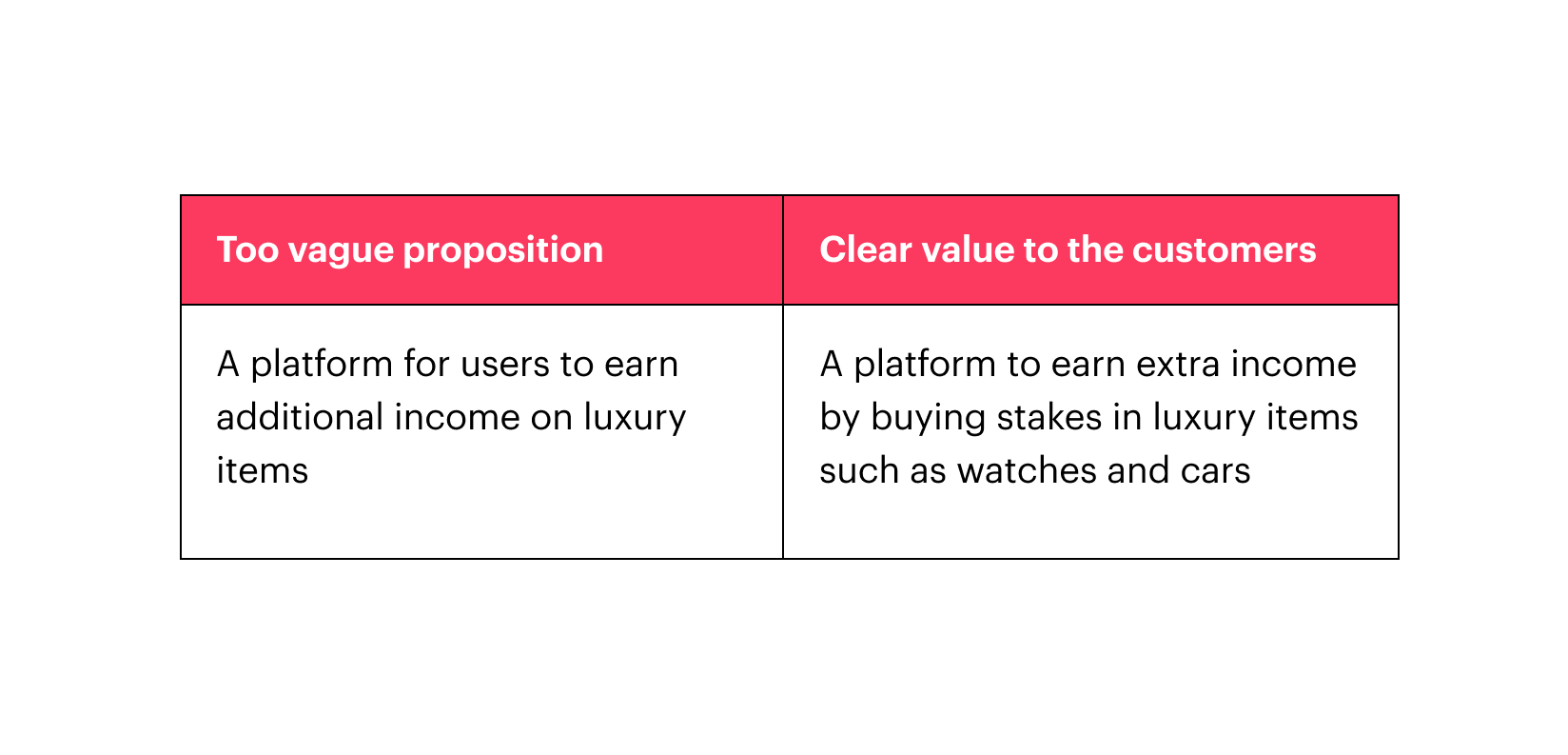4 milestones of shaping your product value
A product niche without any competitors is hard to find.

That’s why every new product on the market must have:
- Clear value for customers, ideally wrapped up in one sentence
- A batch of advantages that help your product stand out among the competitors
- A narrow focus on one target market
- A clear understanding of the business model and type of monetization.
And it’s all better done before the actual launch of the product! Let's break down each step 🐾
The real value of the product
A clear value proposition is basically what your customers get from using your product. If you have too many answers to this question and can’t stop describing all its features then you don’t have a clear value that customers will understand 100%.
Also, if your proposition is too vague, you won’t win over customers either because you won’t stand out among competitors

Standing out among competitors
If your product is not a game-changing unicorn of the industry and is simply better than some other competitors in some aspects, you need to make them visible to customers. Otherwise, your product will be lost among other competitors with similar propositions.
If you have a marketplace for tech gadgets similar to all the other online retailers, but you offer better delivery options — mention it upfront. Try to put your main advantage in the headline and value proposition, ideally in one short line of the text.
Narrow your target audience
It’s important not to mix audiences and try to acquire all the web users. Firstly, there will be too many irrelevant users who won’t become your customers, even if you spend money on the best creatives to get them to your product.
Secondly, the broader your audience is the poorer the results.
The inability to find your specific target customers usually comes from a lack of clear understanding of the value and advantages of the product. So don’t try to figure your audience out before you get these two points worked out.”
A common mistake is trying to reach two distinct audiences with the same value set and advantages. For example, you have a platform to earn extra income by buying stakes in luxury items. This proposition is clear for customers who want to get additional income.
But if you try to reach out to the sellers of luxury items with the same proposition, you won’t have any appeal to them. The value of choosing your platform isn’t clear. That’s why it’s better to have several value propositions for different segments of customers.
Understand your business model and monetization type
To find the right business model for your startup you need to understand what, when and where you’re providing (selling) to your customers or partners, what is your product price and what resources you need to produce your product.
Don’t rely on random luck and always keep these questions in mind.
At the same time, the key to maximizing profits for your product lies in finding the right monetization strategy for your business model.
The most basic types of monetization are:
- Selling — basic eCommerce monetization
- Subscribing — selling a subscription to daily, weekly, monthly, or yearly goods
- Showing ads
The list can be complemented with some other not-so-common types. You can choose only one type, but it’s always wise to test various monetization options to find the one that suits your business the best.
Of course, these are just the first basic steps to success, but they are crucial to do. If you do your homework and can state clearly the product value, its advantages, its audiences, and your proposition to each one of them then you’re set to launch.





